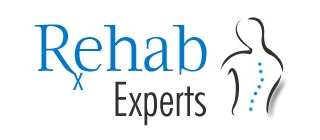In my practice of physical therapy I have encountered a lot of patients who suffer from(DDD) degenerative disc disease. DDD is a condition that can be painful and can greatly affect the quality of life. Disc degeneration is a disease of aging, and though for most people is not a problem, in some individuals it can cause severe chronic pain if left untreated.
Degenerative disc disease may result in back or neck pain, but varies from person to person. Many people have no pain, while others with the same amount of disc damage present with severe pain that limits their activities. Where the pain occurs depends on the location of the affected disc. An affected disc in the neck area may result in neck or arm pain, while an affected disc in the lower back may result in pain in the back, buttock, or leg. The pain often gets worse with movements such as bending over, reaching up, or twisting.The pain may start after a major injury (such as from a car accident), a minor injury (such as a fall from a low height), or a normal motion (such as bending over to pick something up). It may also start gradually for no known reason and get worse over time. In some cases, you may have numbness or tingling in your leg or arm.
The first concern of patients with DDD is to rid themselves of the pain as soon as possible. There are doctors who suggest the use of non-steroidal anti-inflammatory drugs (NSAIDs), anti-inflammatory steroids injections or, in worse case scenarios, surgery to provide instant relief. Then there are those who recommend the more conservative non-invasive approach of employing the expert skills of physical therapists.
According to a US study conducted by Thomas Jefferson University Hospital in Philadelphia there is evidence to support that physical therapy and other non-operative treatments are just as effective at reducing pain and disability as surgical spinal fusion for patients suffering from degenerative disc disease (DDD).
Results of the study, which were published ahead of print in World Neurosurgery, show that among 96 patients treated for DDD, there were no significant differences in outcomes between the 53 who were treated with lumbar fusion and the 43 who chose to pursue nonoperative treatment. Measured outcomes included pain, health status, disability, and overall satisfaction. All patients were cared for by the same physiatrist. All of the subjects in the study received a diagnostic lumbar discography procedure between 2003 and 2009, and were offered fusion surgery based on the discogram and magnetic resonance imaging (MRI) results. Researchers found that while all patients reported significantly lower pain scores, data for the 2 groups “do not demonstrate a significant difference for standardized outcomes measures of pain, generalized health status, satisfaction, or disability.”
This is the reason why I always remind my patients that if they feel pain in their backs, they should not hesitate to consult a doctor or a physical therapist. Treatment must be started the soonest possible time to cut down the unnecessary expenses and expedite the time of healing. To patients who are always on the go, find it difficult to travel, or simply do not want to wait long in rehab clinics, we designed this physical therapy home service in metro manila to meet their needs.
Resources:
WebMD http://www.webmd.com/back-pain/tc/degenerative-disc-disease-topic-overview
APTA http://www.apta.org/PTinMotion/NewsNow/2013/10/11/DDD/

